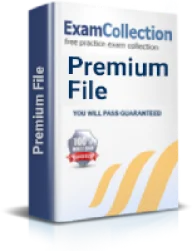I appreciate the work done by actual test team for Checkpoint exam preparation. Actual test questions and answers are well organized and a complete blend of up to date information and ever changing data which is highly essential for Checkpoint exam. Actual test questions and answers provide a lot of opportunities to the students for polishing skills for taking Checkpoint exam.
Gandhi
Best Deal for Unlimited Exam Access
The Fastest Way to Pass Any Exam for Only $149.00

ActualTests.com has the most current and accurate versions of the Checkpoint study
material you are looking for.
Our expert trainers update files regularly and you get the best and latest Checkpoint exam questions every time.
Get Instant Access to Checkpoint Exams and 1,200+ More
Unlimited Lifetime Access Package
-
Access any exam on the entire ActualTests site for life!
-
Our $149.00 Unlimited Access Package buys unlimited access to our library of downloadable PDFs for 1200+ exams.
-
You download the exam you need, and come back and download again when you need more. Your PDF is ready to read or print, and when there is an update, you can download the new version. Download one exam or all the exams - its up to you.
Actual Test Exam Engine
Upgrade your Unlimited Lifetime Access with our interactive Exam Engine! Working with the ActualTests Exam Engine is just like taking the actual tests, except we also give you the correct answers. See More >>
ActualTests Checkpoint Success Stories
I found actual test to be an extremely easy and user friendly package to learn. Actual test are offering 100% success assurance to their client. Actual test team has designed a very reliable and easy to understand material. It gives an easy grasp over the curriculum in a very short time span.
Peter
Actual tests Checkpoint exam engine prepares you to face the harshest challenges in your education. Actual tests Checkpoint exam engine provides you a platform where you can practice as much as you can. Actual tests Checkpoint exam engine will actually make you tough enough to take any challenge you have ever think of.
Fritz Barley
I am very impressed with the services rendered by actual test team for Checkpoint exam. They are very competent and vigilant to keep students up to date for their Checkpoint exam. You can hardly find this type of team which also provide after sales for your Checkpoint exam.
Jennifer
I know people can be skeptic when spending money on some website! But Actual Tests is really cheap and extremely helpful when seeking help for Checkpoint exams. I used Actual Tests throughout my Checkpoint certification; it’s so affordable and completely helpful for Checkpoint exam preparations. It’s the best price you will get anywhere.
Catherine
Pass your Checkpoint exam with guarantee and get the chance of doing excellent job in a software company. Yes this offer is giving by Actual Tests Checkpoint exam preparatory material and you will also defiantly get the chance of excelling your abilities. If any preparatory guide is interested in preparing you then you immediately get them out. My wise decision of using Actual Tests for the preparation of my Checkpoint exam led me to the peaks of success and today I am living like a successful man just because of Actual Tests.
Phineas
My all intensions were on the preparation of Checkpoint exam but still I was not satisfied. I was no getting any idea what to do and my wiriness increasing day by day. Then ultimately I got Actual Tests Checkpoint exam preparatory material and used it for the preparation of my Checkpoint exam. Believe me; friends my success was superb and above because I got the highest marks in whole session. Recently one of my friends also passed his Checkpoint exam with 96% marks and he used Actual Tests on my suggestion.
Pollyanna
I have purchased Checkpoint exam engine and PDF three months back. Done my preparation and get the schedule of Checkpoint exam at prometric center. I was quite confident that I will definitely pass my exam. But the day I reached at prometric center the exam could not be conducted as the center should be shut down because of the short circuit. That was disappointing initially, but I have realized I have not lost much because the very next day in my board I have elloberated my point with perfect technical skills. All thanks to actualtests Checkpoint exam engine, I will surely go again for the exam.
Gresham Johan
Included Checkpoint Certifications
Checkpoint Exams
- 156-110 : Check Point Certified Security Principles Associate (CCSPA)
- 156-215.80 : Check Point Certified Security Administrator (CCSA R80)
- 156-215.81.20 : Check Point Certified Security Administrator - R81.20 (CCSA)
- 156-315.80 : Check Point Certified Security Expert - R80
- 156-315.81.20 : Check Point Certified Security Expert - R81.20





